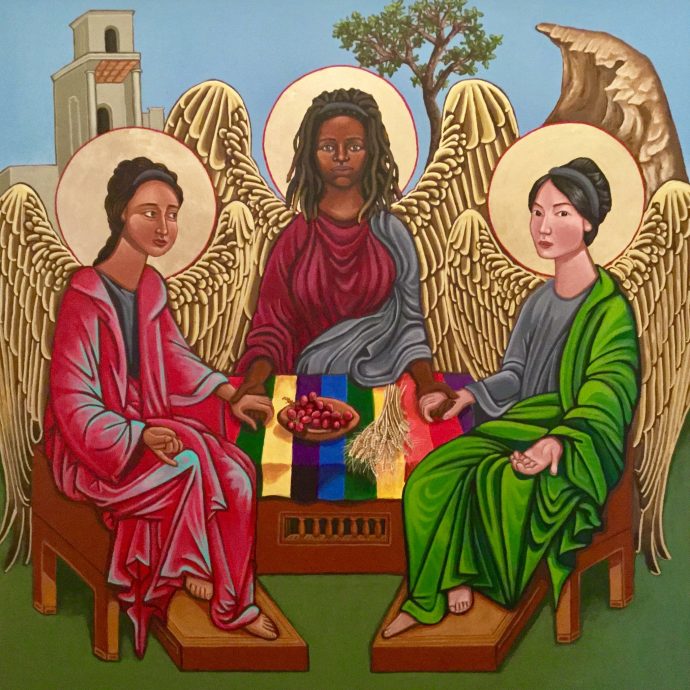Reflection & Practice
During my time at VST I’ve come to appreciate that one of our main tasks as student theologians is to bring our learnings heart to heart with the longings of the world. This takes enormous reflection and practice. Each professor approaches “practice” differently, and in our Christian Theology class each week we are asked to submit a paper on an assigned topic. This paper is meant to summarise the perspectives of the writers we are reading and then to reflect on the way those authors speak to us on the topic. What follows is my paper from the week’s readings on the Trinity, viewed through the writing of Cynthia Rigby, Holding Faith, Chapter 4, alongside Chapter 5 of Sarah Coakley’s book, God, Sexuality and Self. –DL
Rigby’s chapter on the Trinity takes a historical and present-day view of the difficult work of trying to express what it means to say “God who is three is also always one” (p. 119), and why this theological question of the indwelling nature of God, Son, and Holy Spirit matters so deeply to the lives of Christians. Rigby names this theological mystery as “Scandalous Presence”—a great defining force to live through, and she suggests that we might understand our lives to be an ongoing expression of this 1=3, both as individual and participant. Rigby’s brief discussion regarding the gendered language of Father/God is named by “honor both the strengths of the tradition, and the valid challenges made to the tradition” (110).
Sarah Coakley’s approach to that “valid challenge” is to examine the Trinity through the world of Christian iconography with a feminist lens fixed on the question of what is being said through the not-said and possibly encoded social messages. Coakley offers a reflection on centuries of artwork with questions about the many ways the Trinity (and its variations) have been conveyed. Noting in her analysis the range of symbols and persons, the portrayal of ordered power, and the inclusion of masculine/feminine representation, Coakley observes there is such a range that at times “visual imagination outstrips what is doctrinally ‘correct’” (p. 243). Central to her examination of this artwork, Coakley asks how we might read the place of femaleness in relation to Divinity in this iconography.
Through stories and art, in both the historical and the modern context, each author seems to be posing compelling questions about the way of knowing about the Trinity. Rigby asks, ‘What does it mean to be called into fellowship with the Triune God?’ while Coakley asks, ‘What has been left out of artistic portrayals of the Trinity?’ Both of these questions pull faithfully towards a broader defence of the statement “We are Made in God’s Image.” And this faithful question-asking is also why representation in theological stories and art matters in forming our identity in the world, in our faith. How do we know we are part of this story of belonging? Where do we see ourselves in that image?
I can’t help but think about the context of today, in the week of National Day for Truth and Reconciliation. If we believe Rigby when she insists that “the Trinity will not allow anyone who truly subscribes, to be complacent or accepting, that ‘this is just the way the world is’” (p. 131)—then what are we doing? This is the living invitation of the Trinity to take on individual work of hearing truths, while we participate in the collective work of reconciliation, and these are, by all means, the kinds of questions that people live and die by. This is uncomfortable work, demanding and insistent, but also is the work of our time as we stumble our way towards that Imago Dei.
DoraLi Harrison is a current student at VST, nearing the end of her Master of Arts in Public and Pastoral Leadership. In 2019, DoraLi was a recipient of the Inter-religious Studies Essay Award for her essay, “Inside the Liminality: What Birthwork Can teach about Interfaith Work.”
